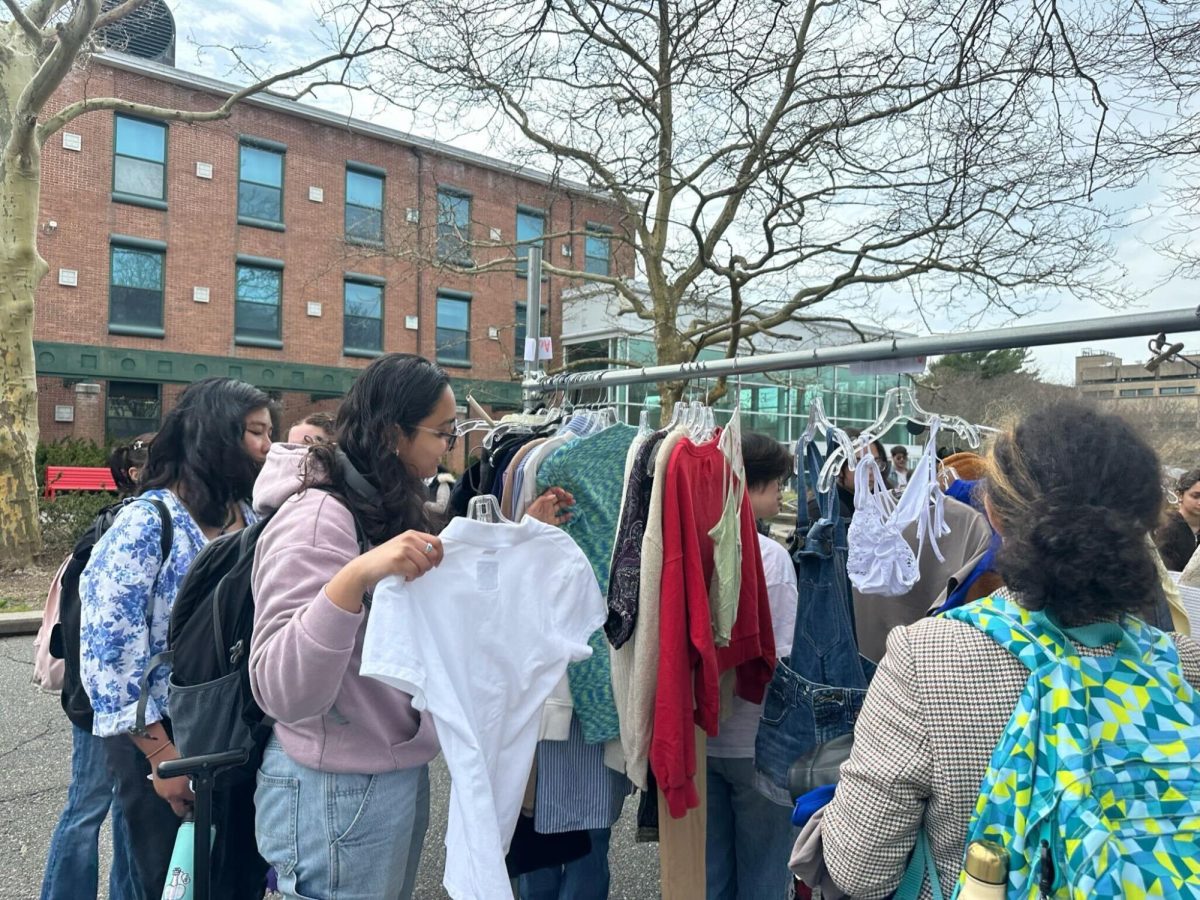
Nestled in between the gift shop and the Starbucks café and across from the main entrance of the hospital is the new Valve Center of the Stony Brook University Medical Center.
The Valve Center, which opened on Sept. 7, offers a comprehensive and specialized evaluation process unlike that of any other in the area for valvular disease, which can include the heart’s valves not opening enough to allow blood to flow through the heart as it should, according to the American Heart Association. Stony Brook University Medical Center noted in its brochure for the Valve Center that valvular disease affects more than five million Americans.
“There’s no good place for patients who have valvular disease to go to,” said Smadar Kort, director of the Valve Center and a professor of medicine at the university. “We have really incorporated technology that can be used.”
The center offers 2D and 3D echocardiograms, which are simply ultrasounds of the heart. The three types are transthoracic, which involves doing the exam by placing the probe on the chest; transesophageal, which puts the probe in the esophagus; and stress echocardiograms, which use physical stress to assess the heart. The Valve Center brings together a variety of heart specialists, including a cardiologist, a cardiac surgeon and a nurse, who meet prior to the patient’s arrival. When the specialists meet, they are able to schedule tests and imaging and meet with the patient all during the same day.
“So they don’t have to come back a different day,” Kort said.
Surgeries are also as minimally invasive as possible. Through a surgical technique that involves cutting small incisions, patients are able to recover more quickly and possibly resume work in a shorter amount of time. Rather than being out of work for four to six weeks, as Valve Center co-director Sandeep Gupta suggested, patients may be able to go back between three to four weeks.
One goal of the center is to have a more timely approach to caring for its patients, who are expected to be seen by doctors within a week of referral. The final stage of treatment should happen within a short amount of time. In order to make the process move more swiftly, Kort said the doctors meet upon referral to discuss the symptoms of the patient and the following steps to cure or treat the problem. That way, when the patient comes in to be seen, he can talk about additional incurring pains for which the doctors will already have solutions to heal.
In order to enhance patient treatment further, the patient’s personal physician and personal cardiologist receive follow-ups from the doctors at the hospital’s specialized valve center.
“Putting the expertise in one place is very important so patients get the best outcomes,” Gupta said.
In fact, specializing in a specific disease is no longer uncommon at the Stony Brook University Medical Center, which houses multiple specialized treatment centers such as the new Cancer Center. The hospital is further divided into areas such as the pulmonary and lung clinic and heart clinic.
According to Gupta, the way a hospital is organized is different than what doctors are taught during medical training. The Valve Center specializes in bringing all the doctors, including a cardiologist, cardiothoracic surgeon and nurse practitioner, for one appointment.
“Medical care now is very organ specific,” said Gupta, who went to medical school for four years and then spent an additional nine years after going through training through residencies.
The Valve Center, which operates under the hospital’s Heart Center, has all it needs to treat its patients.
“[They] have it all in one place,” Gupta said. “I think that’s important for patients that all their doctors are talking to each other and they get the expertise all at once and they get immediate answers.”
According to Kenneth Kaushansky, dean of the School of Medicine at Stony Brook University, the hospital is divided into major centers and disease-specific centers.
“It does not cost a lot of resources to set up a center,” Kaushansky said. While he was unable to provide the exact amount that the Valve Center cost, he compared it to the cost of a major center, such as the Cancer Center, which will be at least half of the new Medicine and Research Translation building’s $195 million construction cost. The money is coming from a number of sources that include $35 million from the state as well as additional money from philanthropists, the university and medical center funds.
Having centers like the Valve Center is important, because they provide the viewpoints of the cardiologist and surgeon. The two types of doctors are trained to see the disease differently — the cardiologist tries to treat valvular disease with medicine while the surgeon loos to treat it through surgery — so the Valve Center provides the opportunity to join the two perspectives into one.
“It allows us to choose what is the best for the patient,” Kaushansky said. “It forces us to talk about every patient as an individual and forces us to make the absolute right decision for the patient, one patient at a time.”
The Valve Center is just an example of where the hospital is going as far as trending. Kaushansky said it makes perfect sense to be looking at taking care of patients this way.
“I think you’ll see that in a lot of the best academic medical centers,” he said.
Stony Brook University houses the only echocardiography laboratory in Suffolk County. Echocardiography is the study of obtaining ultrasound images and one of only 28 in all of the New York to achieve triple accreditation from the Intersocietal Accreditation Commission in all three forms of adult echocardiography – transthoracic, transesophageal and stress. The Medical Center performs 13,000 noninvasive imaging studies per year.







